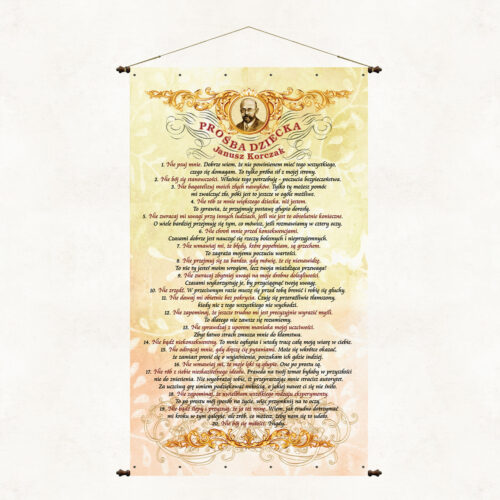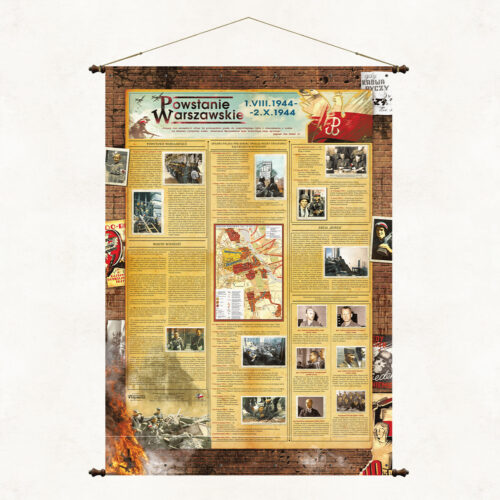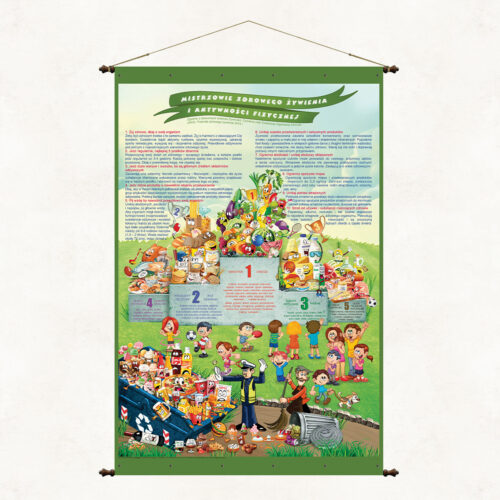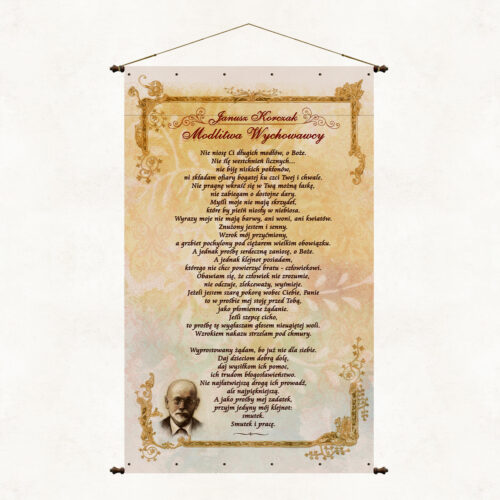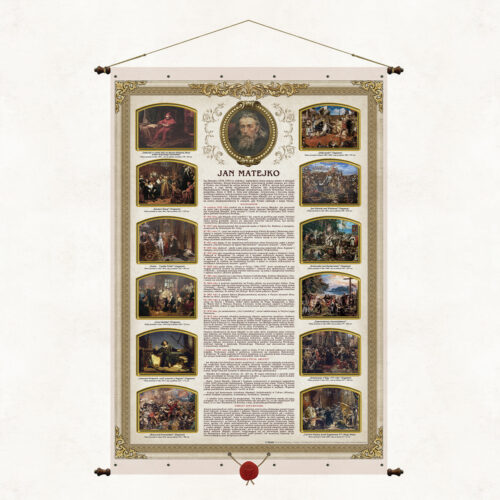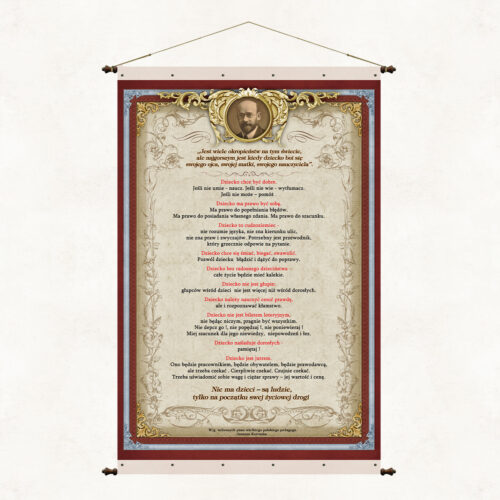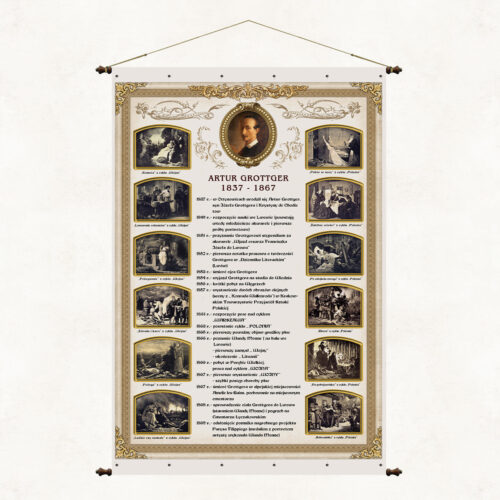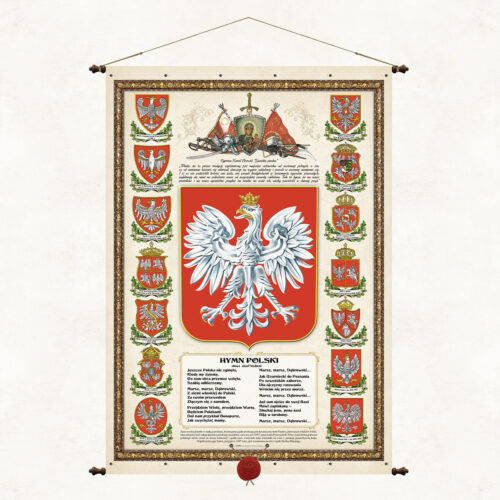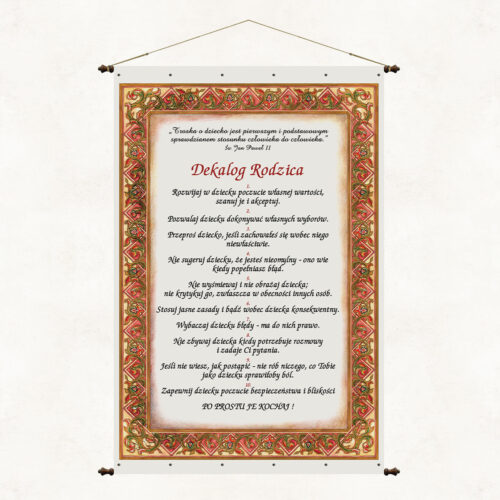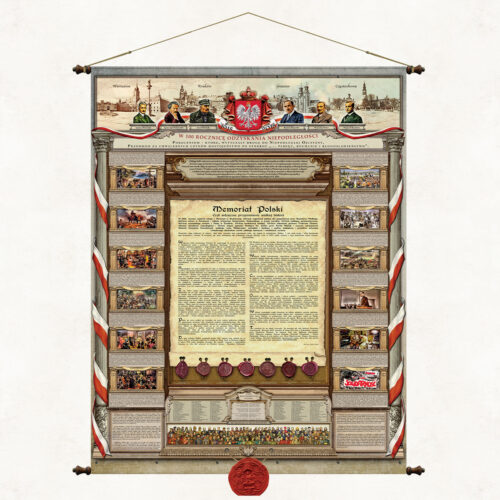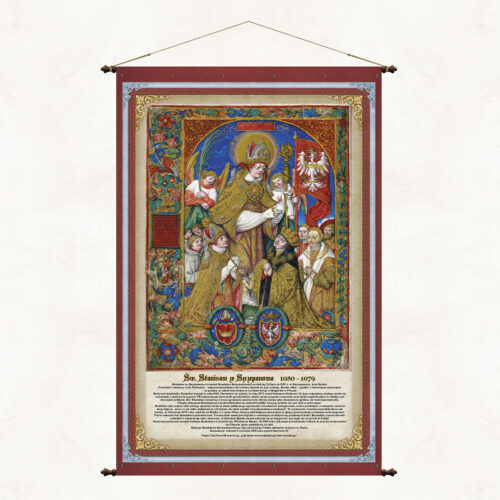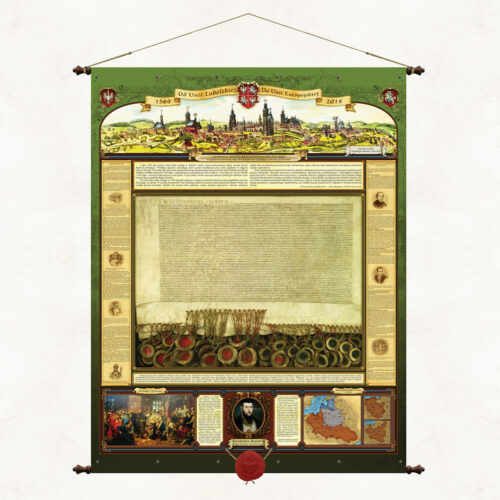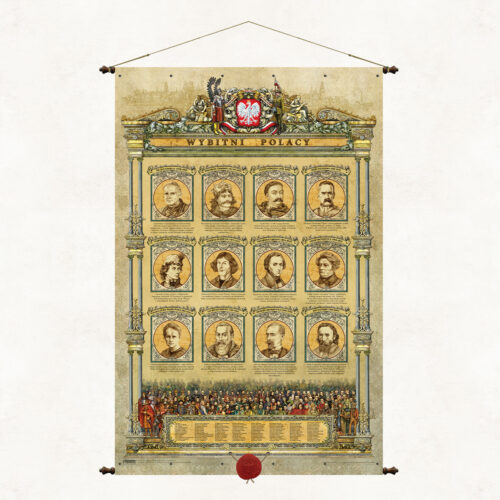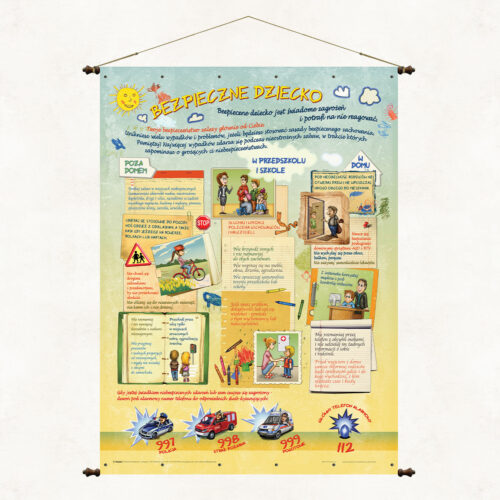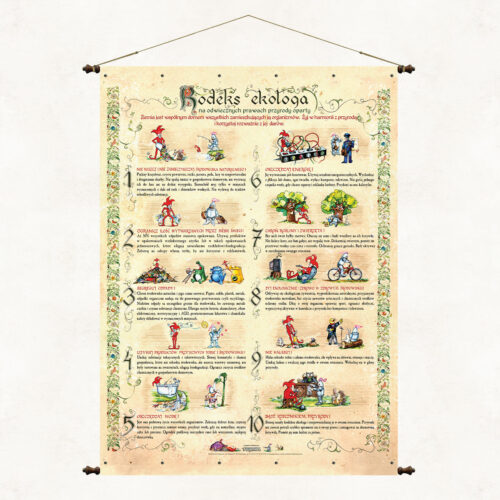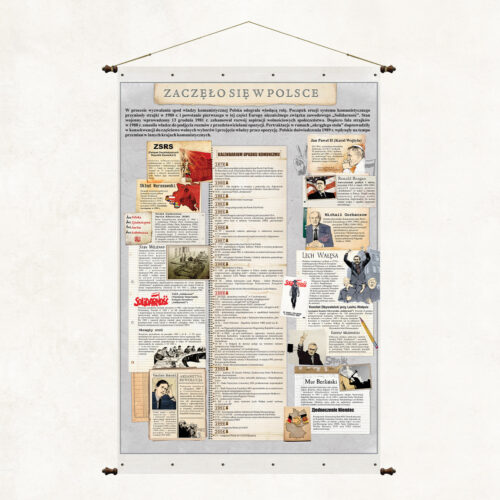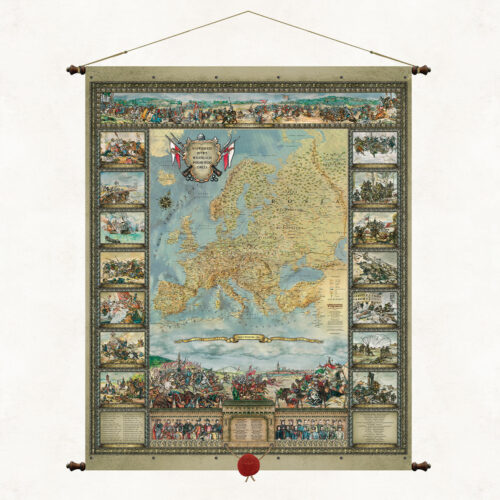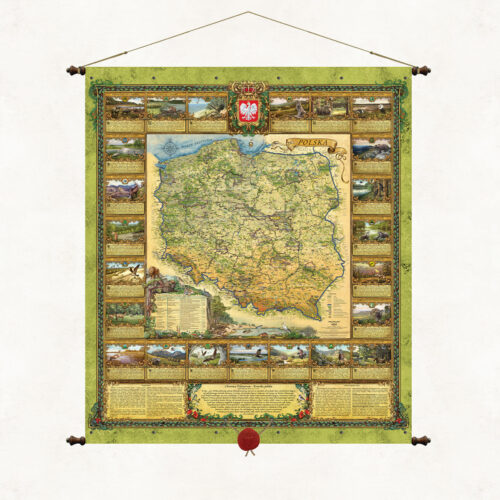-
The board shows a selection of reflections from the writings of the outstanding teacher Janusz Korczak. The author expresses the child's needs, desires and dilemmas in an original form addressed to parents and educators. The engaging text makes us reflect on our attitude towards children and makes us sensitive to their needs.
-
An educational board published to commemorate the Warsaw Uprising.
-
The nutrition board "Champions of healthy eating and physical activity" is a verbal and graphic illustration of the principles of healthy eating. This is an innovative scheme that groups food products and presents them in the form of a sports podium with a very clear evaluative division. Unlike the popular food pyramid scheme, which is not very suggestive for young people, our original board presents the healthiest products in a fun and clear way in the first and subsequent places on the podium. Unhealthy or even harmful dishes were pointedly placed in the garbage. The graphic message is complemented by ten essential principles of healthy eating placed at the top of the publication.
-
Plansz edukacyjna przedstawiająca kalendarium życia Artura Grottgera wraz z wybranymi grafikami arsysty.
-
Patriotic and educational board, compendium of national symbols. We make it in various sizes so that customers can adjust it to their needs and local conditions. The publication presents the modern state emblem, a selection of historical emblems, and the full text of the national anthem (Dąbrowski Mazurka).
-
The Polish Memorial is a unique board, a one-of-a-kind vademecum of Polish history, presenting in a condensed verbal and graphic form the principles of the thousand-year-old heritage of the Polish nation. The main theme of the publication is an anniversary calendar of Polish history written in the form of a historical essay by prof. Andrzej Nowak, an outstanding scientist and committed patriot. The 100th anniversary of regaining independence became an impulse for the historian to present other significant anniversaries. Describing over 1,000 years of Polish history, the professor brings us closer to the historical continuity of Polish fate and the importance of the generational transmission of culture and tradition. At the bottom of the memorial, we have placed replicas of historical seals of Polish rulers and people and institutions significantly inscribed in Polish cultural heritage. Apart from the title essay, there are symbols of national identity on the board: - national emblem and anthem, - engravings depicting the former capitals of Poland - Gniezno, Krakow and the modern capital - Warsaw, and Częstochowa as the spiritual capital of the country, - images of the most outstanding Poles, those considered to be the Fathers of Independence in 1918, and representatives of generations that have maintained their independence deed and legacy over the millennium, - significant messages and statements about Poland and Poles, - a brief description of the history of Poland's independence and symbolically illustrating it with engravings. The canons of Polishness written down and illustrated on the board by the editors, apart from their educational function, are also an aesthetic element of the patriotic decor of apartments and offices, expressing respect and attachment to tradition.
-
The board commemorates Saint. Stanisław of Szczepanów (also Stanisław Szczepanowski), bishop of Krakow, martyr, saint of the Catholic Church and one of the main patrons of Poland. The illumination placed on the board shows Saint. Stanisław as the patron saint of the Kingdom of Poland and comes from the work of Jan Długosz entitled Catalog of the Archbishops of Gniezno (Latin: Catalogus archiepiscoporum gnesnensium) from before 1476. The author of the painting is the Cistercian Stanisław Samoshootnik, a. Stanisław of Mogila (1480 - 541) - Polish painter, illuminator and miniaturist. The illustrations for the catalog were made several dozen years after Jan Długosz's death.
-
The board was published in 2019, on the 450th anniversary of the Union of Lublin. The attractive, stylized form of the publication presents the history and significance of that great event. We presented: – content of the act of the Senate of the Republic of Poland establishing 2019 as the year of the Union of Lublin – a photocopy of the Act of the Union of Lublin in actual size – panorama of Lublin from 1614 – extensive fragments of the original text of the union – a brief historical outline of events related to the Union of Lublin – fragment of the will of King Sigismund II Augustus referring to the Union of Lublin – image of Jan Matejko's painting - Union of Lublin – Map of the Polish-Lithuanian Commonwealth from the 17th century. The board is topped with a wax seal with an eagle, is 98 cm wide and is mounted on decorative bars.
-
The board presents a selection of over 120 outstanding Poles who made a significant contribution to the creation and strengthening of Polish statehood, culture and national heritage. Their images appear at the bottom of the map and are numbered, which allows easy identification of the person according to the list below. In the center of the board there are portraits of 12 figures particularly important to Poles and our national tradition.
-
Wartościowa edukująca historycznie publikacja, której intrygujący tytuł pobudza do zastanowienia, o jakie wydarzenie historyczne chodzi. W Polsce miało początek wiele wydarzeń, ale nie wiele z nich jest tak fałszywie interpretowanych przez część europejskich historyków, jak właśnie początek i przyczyna upadku reżimów komunistycznych a szczególnie tego najgorszego – Związku Radzieckiego. Staramy się poprzez tę planszę dać udokumentowaną odpowiedź na istotne pytania dotyczące tamtego okres i tamtych wydarzeń.
-
"Poland is a land of ancient primeval forests and thousands of lakes spread on hills and plains between the Baltic Sea and the high Tatra Mountains. History has endowed our country with a unique place on Earth, thanks to which beautiful Polish landscapes four times a year undergo extraordinary metamorphoses delighting with the dynamics of nature, its unusual colors and moods." The map “Nature of Poland” is a publcation unique and beautiful, full of images and symbols of the natural heritage of our country. It is a map - sanctuaries of Polish nature, which should, like the works of Mickiewicz, go under thatched roofs to give and strengthen in us a sense of connection with nature and responsibility for it. Maintained in the convention of old cartographic works, it tells about the treasures of nature that have survived to our time. It presents in decorative cartouches business cards of Polish national parks, gives the most important natural and geographical information about Poland, describes the forms of environmental protection used in our country, beautifully promotes Polish nature. Wishing to popularize the natural beauty of our country, we have published two twin maps, “Nature of Poland” and “Forests of Poland”, which in a complementary way present the overall resource of Polish nature. National parks are the mothers of Polish flora and fauna, but they are not a separate and independent natural creation, they are part of our natural environment, which includes many components such as forests, landscape parks, areas of protected landscape, agricultural land and, of course, water. National parks account for only 1% of our country's land area. The remaining 29% is made up of forest areas owned by the State Forestry Service.
-
A map of the Rudziniec Forest District, one of 38 forest districts that form part of the Regional Directorate of State Forests in Katowice. The map presents a brief description of the forest district, forest divisions and forest habitat types.


